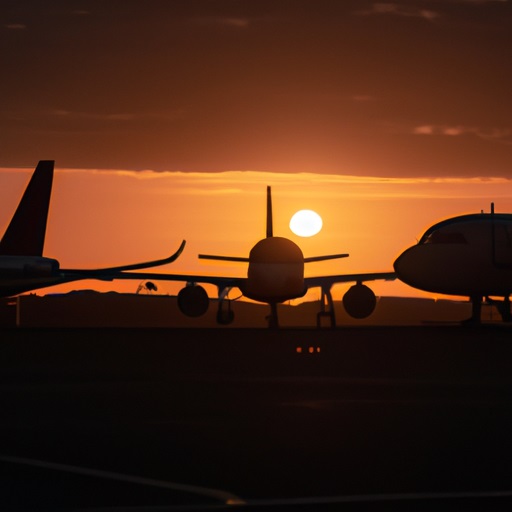
Why Do Airlines Systematically Schedule Their Flights to Arrive Late?
Airlines have a reputation for flights consistently arriving late, often by just a few minutes. This lateness is not accidental but rather part of how airlines schedule flights and manage their operations. There are several reasons why airlines build delays into their schedules:
To Allow For Operational Variables
The first major reason is that scheduling flights to arrive precisely on-time does not account for inevitable operational variables such as:
- Weather delays – Inclement weather like thunderstorms or snowstorms can force planes to fly around storm systems, delaying arrivals. Weather at hub airports cascades delays through the system.
- Air traffic control issues – Congestion in the air traffic control system, especially at busy airports, leads to departure and arrival delays as planes get stuck in holding patterns.
- Mechanical problems – No matter how diligent maintenance is, planes occasionally have technical issues that result in delays.
- Crew connectivity – Airlines need to ensure flight crews are in place for the next scheduled flight, which can cause delays if earlier flights were delayed.
- Ground operations – Factors like baggage handling, fueling, catering, cleaning, passenger boarding, etc. can fall behind schedule and delay departures.
By building in extra “buffer” time into the schedule, airlines can absorb many of these small operational delays without necessarily arriving late. Most airlines assume their flights will be delayed a certain percentage of time, so the scheduled arrival time is later than the time they actually expect to arrive.
To Maximize Utilization of Assets
Airlines schedule their flight times in order to maximize the productive use of their aircraft, crews, and other assets.
A plane that sits idle at an airport gate earns no money for the airline. So airlines tightly connect incoming and outgoing flights to minimize ground time. This allows them to schedule more flights per day for each plane and fit more paying customers onto flights.
However, tight turnarounds leave less room for error. A short delay on an incoming flight means the departing flight is likely to be delayed as well while the plane and crew get repositioned. Airlines know delays will happen, so they pad the schedules.
Airlines also optimize schedules based on passenger demand patterns. Having flights arrive earlier may mean planes sit idle during periods of low passenger traffic. Arriving later in the day or evening better matches customer demand.
For crews, longer ground time allows more flexibility in scheduling duty days and overnight breaks. Delayed arrivals that shorten turnaround times could cause crews to exceed duty limits if strictly scheduled.
To Improve On-Time Performance Metrics
Many airlines are evaluated in part by their on-time performance metrics. Arriving 15-30 minutes behind schedule looks better than arriving an hour late.
By building in extra time, airlines can absorb routine delays and still often arrive within the 15 minute “on time” window used by regulators. This flattering metric makes them appear more reliable and punctual.
Of course, padding leads to customer frustration when flights are consistently late yet still considered “on time.” So airlines walk a delicate line with padding schedules – enough to maintain metrics, but not so much customers feel cheated.
To Gain Advantages Over Competitors
In competitive airline markets, gaining small operational advantages over rivals via schedule padding can be helpful.
If Airline A pads schedules more than Airline B, it is likely to have better on-time performance metrics. This looks better to travelers and travel agents.
Airline A also gets more flexibility operationally – they can better absorb delays and still meet scheduled arrival times. This helps them run a smoother overall operation.
Airline B, with less padding, risks bigger disruptions and missed passenger connections when inevitable delays occur. Over time, these disadvantages compound.
So aggressive schedule padding is one way airlines seek to gain an edge over their competitors in tightly contested markets. The cost is increased passenger frustration with the airline always running five to ten minutes late.
To Allow Time For Maintenance and Cleaning
Finally, padding flight times also builds in more time for maintenance teams to service the aircraft on the ground. This includes routine tasks like:
- Refueling the plane
- Performing safety/maintenance inspections
- Cleaning the cabin
- Emptying/refilling water tanks
- Removing trash
- Performing minor repairs
With less ground time between flights, some of these tasks may get delayed or rushed. Mechanics may need to stay late or be called in early before the plane’s next flight to finish maintenance items.
A bit of schedule padding gives maintenance teams more leeway to thoroughly do their work without shortchanging safety or service. For airlines, this is well worth the tradeoff of a slightly later arrival.
Final Thoughts
Airlines have significant incentive to build slight delays into their flight schedules. A few minutes of padding allows them to:
- Absorb routine operational delays from weather, ATC, etc.
- Maximize usage of expensive assets like planes and crews
- Improve on-time arrival percentages
- Gain advantages over tightly-scheduled competitors
- Provide maintenance teams sufficient time to service aircraft
This schedule padding results in flights consistently arriving 5-15 minutes later than the posted arrival time. Airlines determine this acceptable tradeoff for the benefits it provides them.
For passengers, it leads to travel uncertainty and frustration. But airlines with razor-thin profit margins are willing to annoy passengers slightly rather than risk larger operational disruptions, missed connections, and other downstream problems that can result from overly aggressive scheduling.
So next time your flight creeps in 10 minutes behind schedule, know that it was most likely planned that way from the start. The conspiracy of airlines to manipulate schedules is not aimed against passengers personally. It stems from operational optimization in a complex, competitive industry.
Frequently Asked Questions
Why don’t airlines just schedule flights later then?
Airlines still want to maintain a schedule of flight times that appeals to passenger preferences and patterns. Departing at 8:05am looks a lot better than 8:30am to travelers, even if the airline knows the 8:05am will probably be delayed to 8:15am anyway.
And spacing flights evenly throughout the day allows airlines to maximize frequency for customers. Scheduling everything 15 minutes later would lead to periods with few flight options.
Are short-haul or long-haul flights more often delayed?
Short haul flights tend to arrive closer to scheduled times because they have fewer opportunities to get delayed. Long haul international flights are more likely to be delayed because weather or ATC over an ocean and several hours of flying can compound delays.
Why are delays worse at large hub airports?
Big hubs with lots of congestion and traffic are more likely to see delays cascading through the system. Adverse weather also tends to be worse at major hubs based in large metro areas. And schedule padding is less effective since delays are more pronounced.
Wouldn’t removing padding mean more punctual flights?
In theory yes, but in practice it would lead to significantly worse outcomes for airlines. Tight schedules allow single delays to spread rapidly. Passenger frustration and operational challenges would be immense under a zero-padding model. Most airlines recognize removing all padding is an unsustainable business practice.
Are budget airlines less prone to padding schedules?
Sometimes. Budget carriers tend to run tighter schedules with lower costs and less slack in the system. But they also operate fewer long haul flights where delays are most common. In general, padding practices are based more on competitive environment and operational needs than low-cost versus full-service airline models.
Do regional airlines pad schedules as much?
Regionals actually tend to pad even more than major airlines. Their trips often involve small planes and multiple stops where delays can compound quickly. Maintaining schedule integrity is paramount for regional airlines operating flights under contract for bigger carriers. So they pad aggressively to meet on-time arrival commitments.
How does schedule padding affect airline pilots?
Pilots generally favor a bit of padding in schedules, especially for long multi-segment trips. It provides more contingency for weather, ATC, and other delays to avoid exhausting duty limits. However, too much padding means more time spent waiting and less efficient use of work hours. Moderation is ideal for pilots balancing productivity and delays.
Are international flights on foreign airlines less prone to padding?
Not necessarily. Operational variables leading to delays are consistent globally. Carriers in Europe, Asia, the Middle East, etc. face the same pressures and tradeoffs as U.S. airlines when constructing flight schedules. Most pad at comparable levels based on competitive environment and operational requirements.





